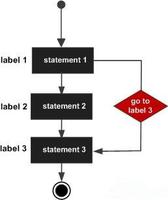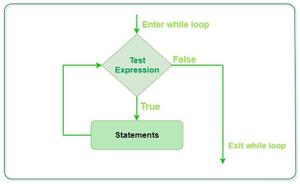Python循环语句中else的用法总结
前言
本文讨论Python的for…else和while…else等语法,这些是Python中最不常用、最为误解的语法特性之一。
Python中的for、while等循环都有一个可选的else分支(类似if语句和try语句那样),在循环迭代正常完成之后执行。换句话说,如果我们不是以除正常方式以外的其他任意方式退出循环,那么else分支将被执行。也就是在循环体内没有break语句、没有return语句,或者没有异常出现。
下面我们来看看详细的使用实例。
一、 常规的 if else 用法
x = True
if x:
print 'x is true'
else:
print 'x is not true'
二、if else 快捷用法
这里的 if else 可以作为三元操作符使用。
mark = 40
is_pass = True if mark >= 50 else False
print "Pass? " + str(is_pass)
三、与 for 关键字一起用
在满足以下情况的时候,else 下的代码块会被执行:
1、for 循环里的语句执行完成
2、for 循环里的语句没有被 break 语句打断
# 打印 `For loop completed the execution`
for i in range(10):
print i
else:
print 'For loop completed the execution'
# 不打印 `For loop completed the execution`
for i in range(10):
print i
if i == 5:
break
else:
print 'For loop completed the execution'
四、与 while 关键字一起用
和上面类似,在满足以下情况的时候,else 下的代码块会被执行:
1、while 循环里的语句执行完成
2、while 循环里的语句没有被 break 语句打断
# 打印 `While loop execution completed`
a = 0
loop = 0
while a <= 10:
print a
loop += 1
a += 1
else:
print "While loop execution completed"
# 不打印 `While loop execution completed`
a = 50
loop = 0
while a > 10:
print a
if loop == 5:
break
a += 1
loop += 1
else:
print "While loop execution completed"
五、与 try except 一起用
和 try except 一起使用时,如果不抛出异常,else里的语句就能被执行。
file_name = "result.txt"
try:
f = open(file_name, 'r')
except IOError:
print 'cannot open', file_name
else:
# Executes only if file opened properly
print file_name, 'has', len(f.readlines()), 'lines'
f.close()
总结
关于Python中循环语句中else的用法总结到这就基本结束了,这篇文章对于大家学习或者使用Python还是具有一定的参考借鉴价值的,希望对大家能有所帮助,如果有疑问大家可以留言交流。
以上是 Python循环语句中else的用法总结 的全部内容, 来源链接: utcz.com/z/354851.html





